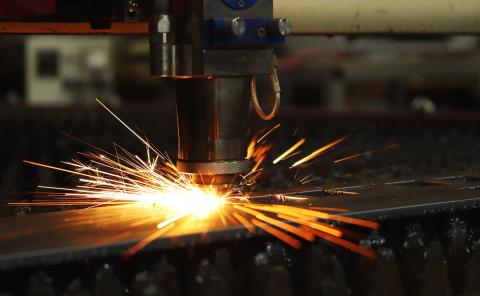
Reducing the loss of yield in electrical machines
Researchers from the ‘Systèmes et applications des technologies de l’information et de l’énergie’ laboratory (SATIE - Université Paris-Saclay, ENS Paris-Saclay, CNRS, CNAM, Cergy Paris Université) have developed, in collaboration with the University of Sao Paulo, a process to reduce iron losses at high-frequency in electrical machines. This method, which combines mechanical and thermal treatments, has also given rise to an analysis of the frequency behaviour of materials in order to understand the factors which improve their performance.
Magnetic materials are the cornerstone components of electrical machines and are subject to heating, which increases with the frequency of use and which in turn leads to a decrease in the performance of these machines. As they gain more and more power and operate at higher and higher frequencies, reducing these losses results in higher yields. Thanks to their understanding of the mechanisms involved, the team from the SATIE laboratory and the Institute for Technological Research at the University of Sao Paulo have developed a new type of treatment for magnetic materials which makes it possible to limit these losses.
The magnetic materials at the heart of the research
In the SATIE laboratory - whose area of expertise extends from electrical energy to signal processing - the team works both on developing magnetic materials and on studying their physical and functional properties. These materials have a wide range of applications, from transformers to magnetic refrigerators.
‘The use of the magnetic materials which were traditionally used in electrical devices is limited nowadays by operating frequencies, which are continually increasing.’, explains Frédéric Mazaleyrat. Twenty years ago, most electric motors operated at a frequency of 50 Hertz. However, today, machines (especially electric vehicles) operate at much higher frequencies to ensure a gain in power per unit volume and mass. The higher the rotational speed of an electric motor, the greater its power at constant volume becomes. However, the higher the frequency, the greater the losses in the magnetic core. ‘These excessive losses, which are directly related to operating frequencies,, often impede the design of new motors‘, points out Frédéric Mazaleyrat.
Mechanical and thermal treatments to limit losses
Luckily, solutions exist. As the losses are linked to the thickness of the material, it is possible to use thinner metal sheets. However, the machines then become more complicated to manufacture and the sheets become more expensive to buy. Researchers from the SATIE laboratory decided to study several types of mechanical treatments, in this case very light laminating, in order to modify the properties of the material and reduce losses at high frequency. ‘We knew that this type of treatment would increase low-frequency losses. The challenge was to identify a suitable treatment and the frequency at which a decrease in losses could be seen.’, explains Frédéric Mazaleyrat. Their results show that with a light lamination process and an adequate heat treatment to control the relaxation of stress caused by lamination, losses are significantly reduced during high-frequency operation.
Crucial understanding of the phenomena involved
Until recently, manufacturers produced materials of various grades of quality which were then chosen by electrical machinery manufacturers. Now, it is the reverse. The intended application determines the properties of a material, and the manufacturer then develops an appropriate material. This new paradigm only works if there is a good understanding of the phenomena involved and of the relationship between mechanical and thermal treatments and losses, as is the case with the researchers at SATIE. ‘We did not know at what frequency an improvement would be achieved, but we had a very precise and qualitative idea of the phenomenon. We knew we would get a benefit from certain frequencies’, Frédéric Mazaleyrat concludes.
Reference: F.J.G.Landgraf et al. Loss decomposition in plastically deformed and partially annealed steel sheets. Journal of Magnetism and Magnetic Materials, Volume 502, 15 May 2020, 166452
